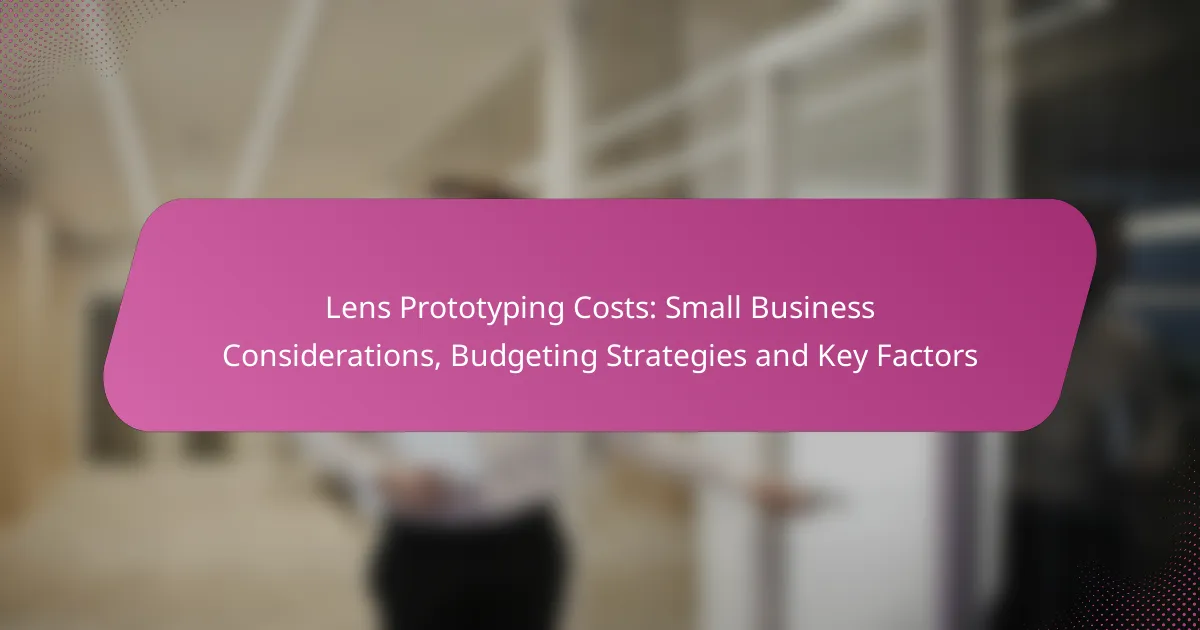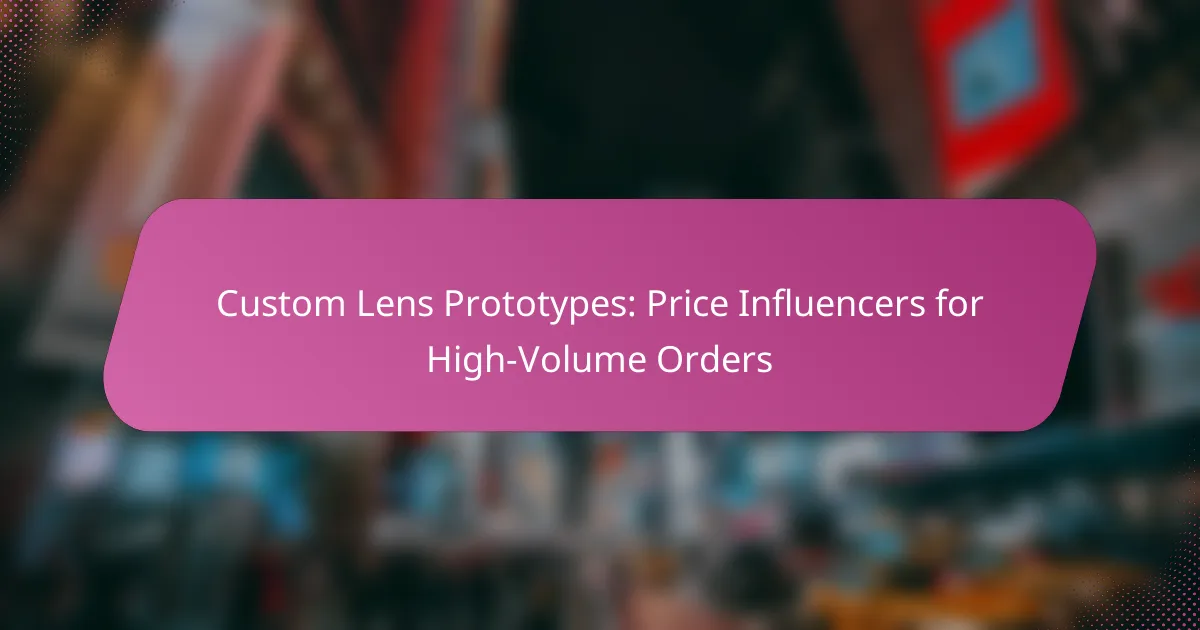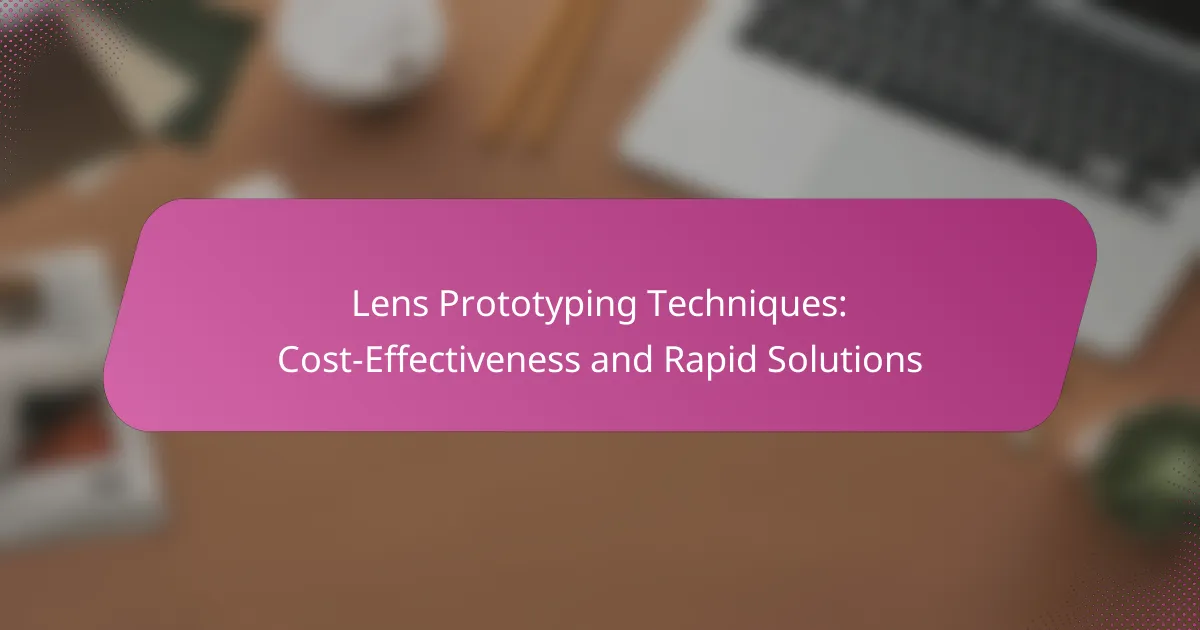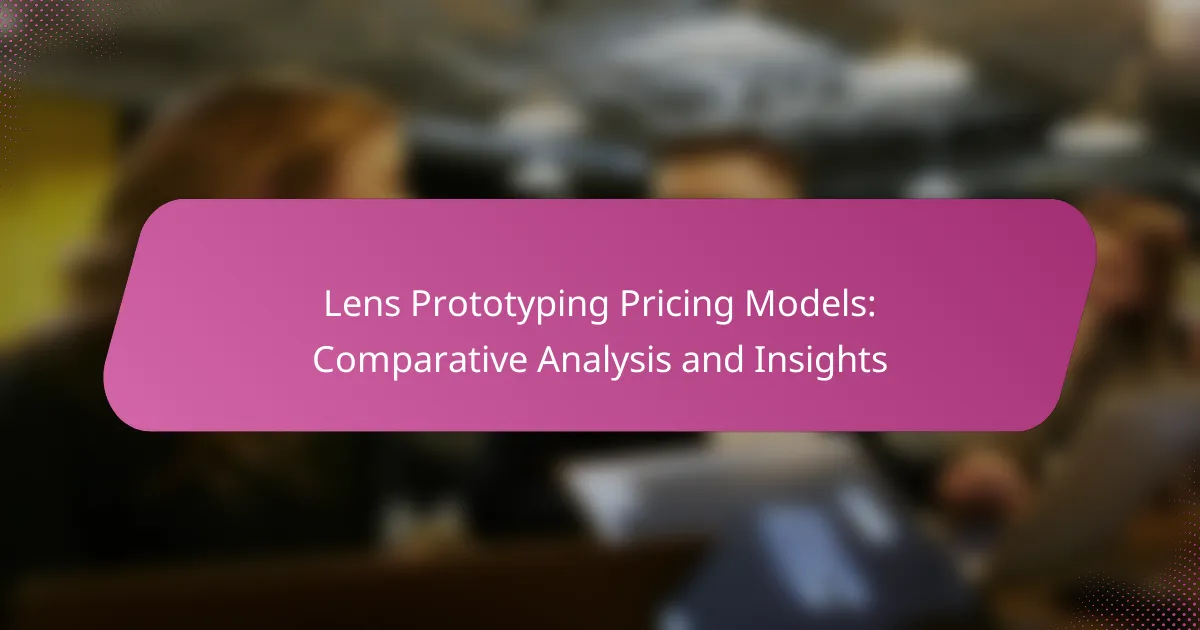Lens prototyping costs can significantly impact small businesses, influenced by factors such as material choice, design complexity, and production volume. By understanding these elements and implementing strategic budgeting practices, businesses can effectively manage expenses and optimize their prototyping processes.
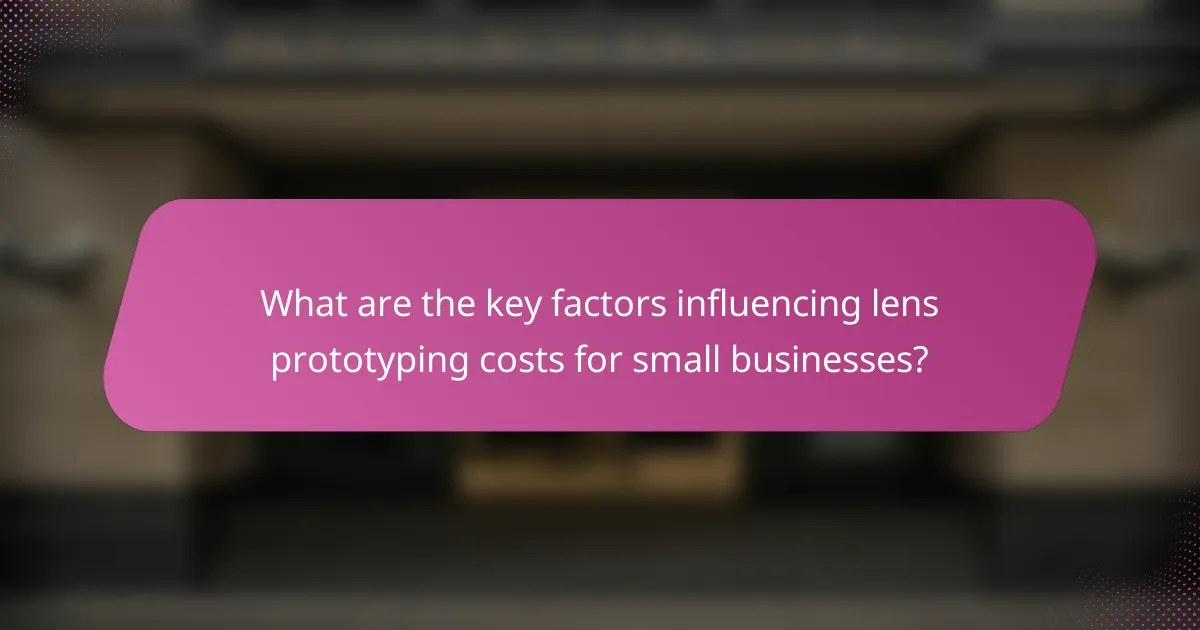
What are the key factors influencing lens prototyping costs for small businesses?
Lens prototyping costs for small businesses are primarily influenced by material selection, design complexity, production volume, technology used, and supplier location. Understanding these factors can help businesses budget effectively and make informed decisions during the prototyping process.
Material selection
The choice of materials significantly impacts the overall cost of lens prototyping. High-quality optical materials, such as polycarbonate or high-index plastics, tend to be more expensive but offer better performance. Conversely, using lower-cost materials may reduce expenses but could compromise optical clarity and durability.
When selecting materials, consider the specific application of the lenses. For instance, lenses intended for safety glasses may require more robust materials, while those for fashion eyewear might prioritize aesthetics over strength.
Design complexity
Design complexity directly affects prototyping costs, as intricate designs often require more advanced manufacturing techniques and longer production times. Simple lens shapes are generally less expensive to produce, while complex geometries may necessitate specialized tooling and increased labor costs.
To manage costs, aim for a balance between design innovation and manufacturability. Utilizing design software can help visualize and optimize designs before committing to production, potentially reducing costly revisions later.
Production volume
Production volume plays a crucial role in determining lens prototyping costs. Generally, higher volumes lead to lower per-unit costs due to economies of scale. Small businesses should evaluate their expected demand to decide whether to invest in larger production runs or stick with smaller batches.
For low-volume needs, consider on-demand prototyping services, which can reduce upfront costs but may have higher per-unit prices. Conversely, if a business anticipates significant demand, investing in bulk production can yield substantial savings.
Technology used
The technology employed in lens prototyping can greatly influence costs. Advanced manufacturing methods, such as CNC machining or 3D printing, may offer precision and flexibility but often come at a higher price. Traditional methods, while potentially less expensive, might not meet the same quality standards.
Evaluate the trade-offs between cost and quality when selecting technology. For example, 3D printing can be cost-effective for rapid prototyping, while CNC machining might be better suited for final production runs requiring high precision.
Supplier location
Supplier location affects both the cost and lead time of lens prototyping. Local suppliers may offer faster turnaround times and lower shipping costs, but their pricing may be higher compared to overseas manufacturers. Conversely, sourcing from international suppliers can reduce material costs but may introduce longer delivery times and potential customs fees.
When choosing suppliers, consider not only the cost but also their reliability and communication. Establishing a good relationship with a supplier can lead to better pricing and service, ultimately benefiting the prototyping process.
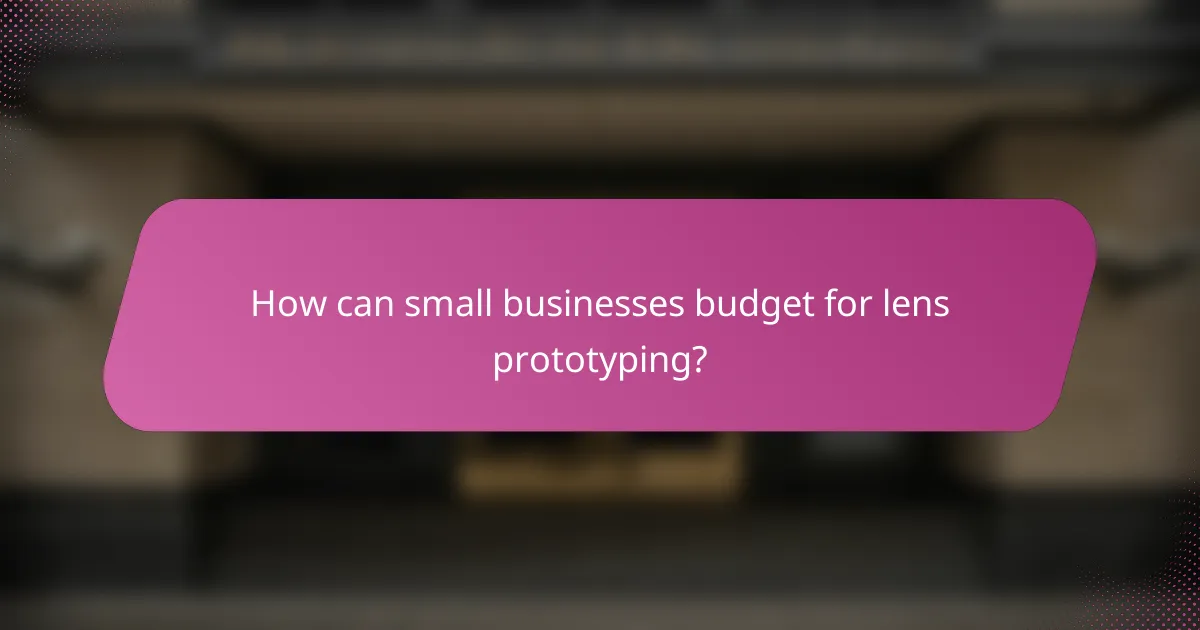
How can small businesses budget for lens prototyping?
Small businesses can effectively budget for lens prototyping by establishing a clear financial framework, identifying all relevant cost categories, and setting aside contingency funds. This structured approach helps ensure that all potential expenses are accounted for, minimizing the risk of overspending.
Establishing a budget framework
Creating a budget framework involves defining the overall financial limits for lens prototyping projects. Start by assessing available resources and determining how much can be allocated without jeopardizing other business operations. A common practice is to set a percentage of projected revenue, often ranging from 5% to 15%, specifically for prototyping efforts.
Additionally, consider the timeline for the prototyping process. Establishing milestones can help track spending against the budget, ensuring that funds are used effectively throughout the project lifecycle.
Identifying cost categories
Cost categories for lens prototyping typically include materials, labor, equipment, and overhead. Materials can vary widely in price depending on the type of lenses being produced, while labor costs will depend on whether you are using in-house staff or outsourcing to specialized firms.
Equipment costs may involve purchasing or leasing machinery needed for prototyping, which can represent a significant portion of the budget. Overhead costs, such as utilities and facility maintenance, should also be factored in to get a complete picture of the financial requirements.
Setting contingency funds
Setting aside contingency funds is crucial for managing unexpected expenses during the lens prototyping process. A common recommendation is to allocate around 10% to 20% of the total budget for contingencies, which can cover unforeseen costs such as material price increases or additional labor needs.
Regularly review the budget and adjust the contingency fund as necessary based on project developments. This proactive approach helps maintain financial stability and allows for flexibility in responding to challenges that may arise during prototyping.
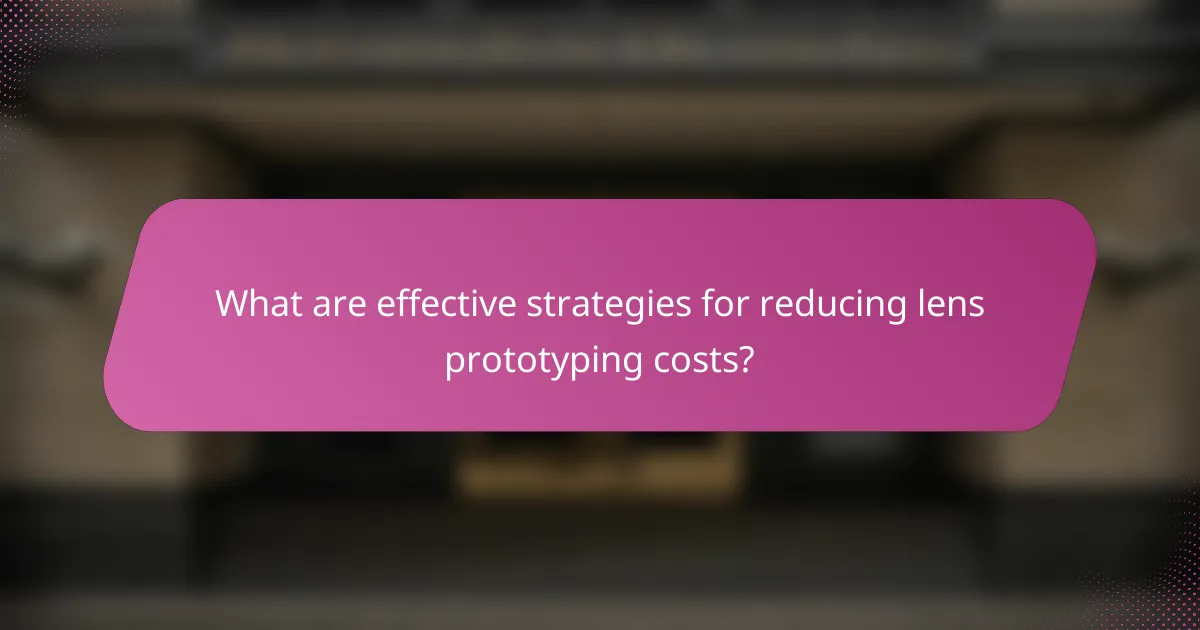
What are effective strategies for reducing lens prototyping costs?
Effective strategies for reducing lens prototyping costs include leveraging bulk orders, utilizing local suppliers, and implementing design optimizations. These approaches can significantly lower expenses while maintaining quality and efficiency.
Leveraging bulk orders
Bulk orders can lead to substantial cost savings in lens prototyping. By purchasing materials in larger quantities, businesses often benefit from reduced prices per unit, which can lower overall project costs.
Consider negotiating with suppliers for discounts on larger orders. For instance, ordering several hundred lenses at once may yield a price reduction of 10-20% compared to smaller orders.
Utilizing local suppliers
Working with local suppliers can help minimize shipping costs and lead times, which are critical factors in lens prototyping. Local partnerships often allow for quicker communication and faster adjustments to designs.
Additionally, local suppliers may have a better understanding of regional regulations and standards, ensuring compliance and reducing the risk of costly errors. This can be especially beneficial in markets with specific requirements, such as the EU or US.
Implementing design optimizations
Design optimizations can significantly reduce prototyping costs by minimizing material waste and production time. Focus on simplifying designs where possible, as complex geometries often require more expensive manufacturing processes.
Utilize computer-aided design (CAD) software to simulate and refine designs before prototyping. This approach can help identify potential issues early, saving both time and resources during the actual prototyping phase.
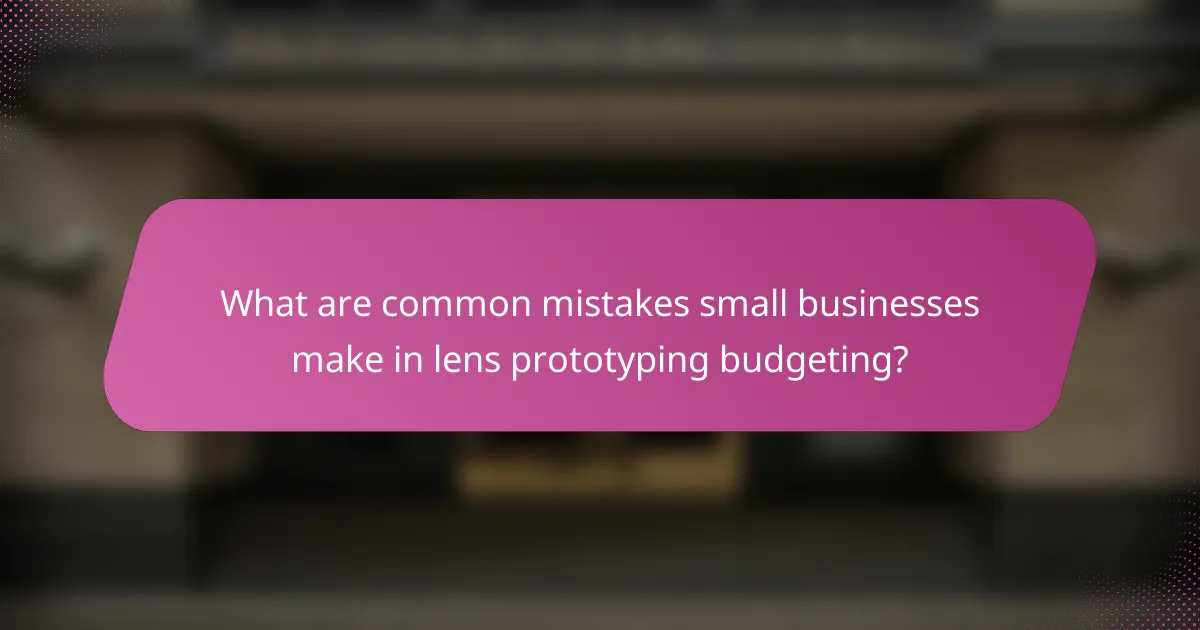
What are common mistakes small businesses make in lens prototyping budgeting?
Small businesses often make several budgeting mistakes in lens prototyping that can lead to overspending and project delays. Key errors include underestimating material costs, overlooking hidden fees, and failing to account for necessary revisions.
Underestimating material costs
One common mistake is underestimating the costs of materials needed for lens prototyping. Businesses may focus on initial quotes without considering the full range of materials required, which can lead to budget overruns. For instance, while a prototype may seem affordable at first glance, additional expenses for specialized coatings or treatments can add significantly to the total cost.
To avoid this pitfall, create a detailed list of all materials required, including potential substitutes. Research suppliers and compare prices to get a more accurate estimate. It’s wise to allocate an additional 10-20% of your budget for unexpected material expenses.
Ignoring hidden fees
Hidden fees can significantly impact the overall cost of lens prototyping. These may include shipping charges, taxes, or service fees that are not immediately apparent in initial quotes. Small businesses often overlook these additional costs, leading to budget discrepancies.
To mitigate this risk, ask suppliers for a comprehensive breakdown of all potential fees. Always read the fine print in contracts and agreements to ensure you understand all possible charges. A good practice is to set aside a contingency fund of around 5-10% of your budget for unforeseen expenses.
Failing to account for revisions
Many small businesses fail to budget for revisions during the lens prototyping process. Prototyping often requires multiple iterations to achieve the desired outcome, and each revision can incur additional costs. Not planning for these changes can lead to financial strain and project delays.
To effectively manage this, include a revision budget in your initial planning. Consider the complexity of your design and allocate funds for at least two to three rounds of revisions. Communicate clearly with your design team about the importance of feedback and adjustments to stay within budget.
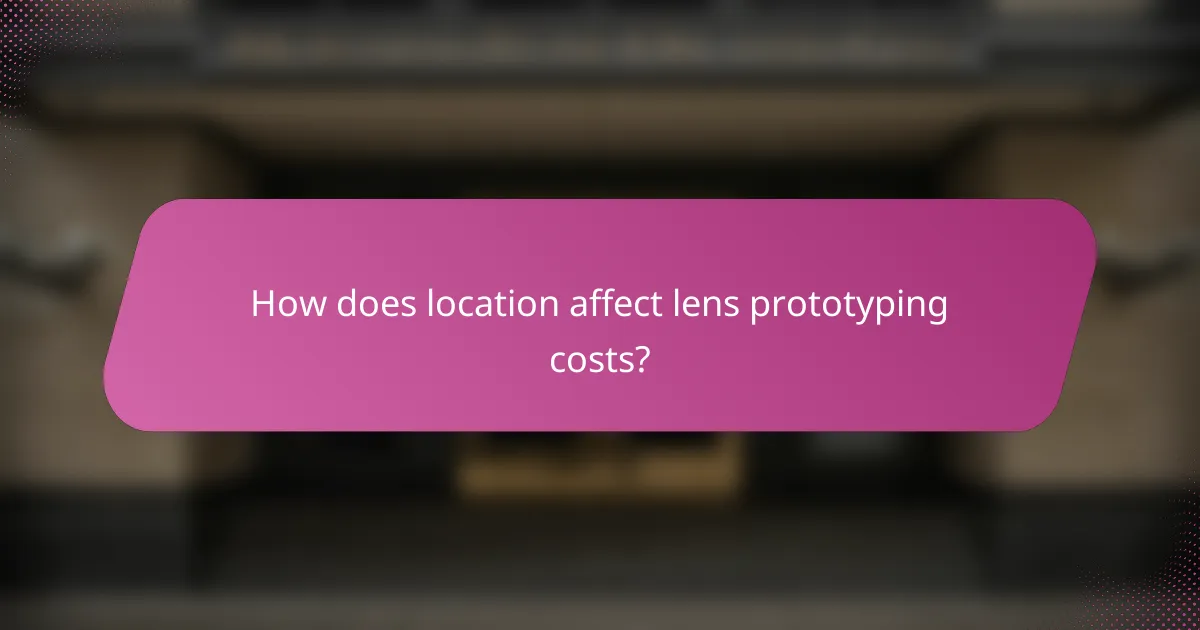
How does location affect lens prototyping costs?
Location significantly impacts lens prototyping costs due to variations in supplier pricing, shipping expenses, and local labor rates. Businesses must consider these factors when budgeting for prototyping to ensure they make informed decisions that align with their financial constraints.
Regional supplier pricing
Supplier pricing for lens prototyping can vary widely based on geographic location. In regions with a high concentration of optical manufacturers, such as parts of Europe and North America, costs may be lower due to competition and availability of materials. Conversely, areas with fewer suppliers might see higher prices due to limited options.
For example, a small business sourcing lenses in Western Europe might encounter prices ranging from €50 to €150 per prototype, while similar services in Eastern Europe could range from €30 to €100. Understanding these regional differences helps businesses choose the most cost-effective suppliers.
When evaluating suppliers, consider not just the price but also the quality and turnaround time. Cheaper options may lead to longer lead times or subpar materials, which can ultimately increase costs if prototypes need to be redone. Always request samples and reviews before committing to a supplier.
